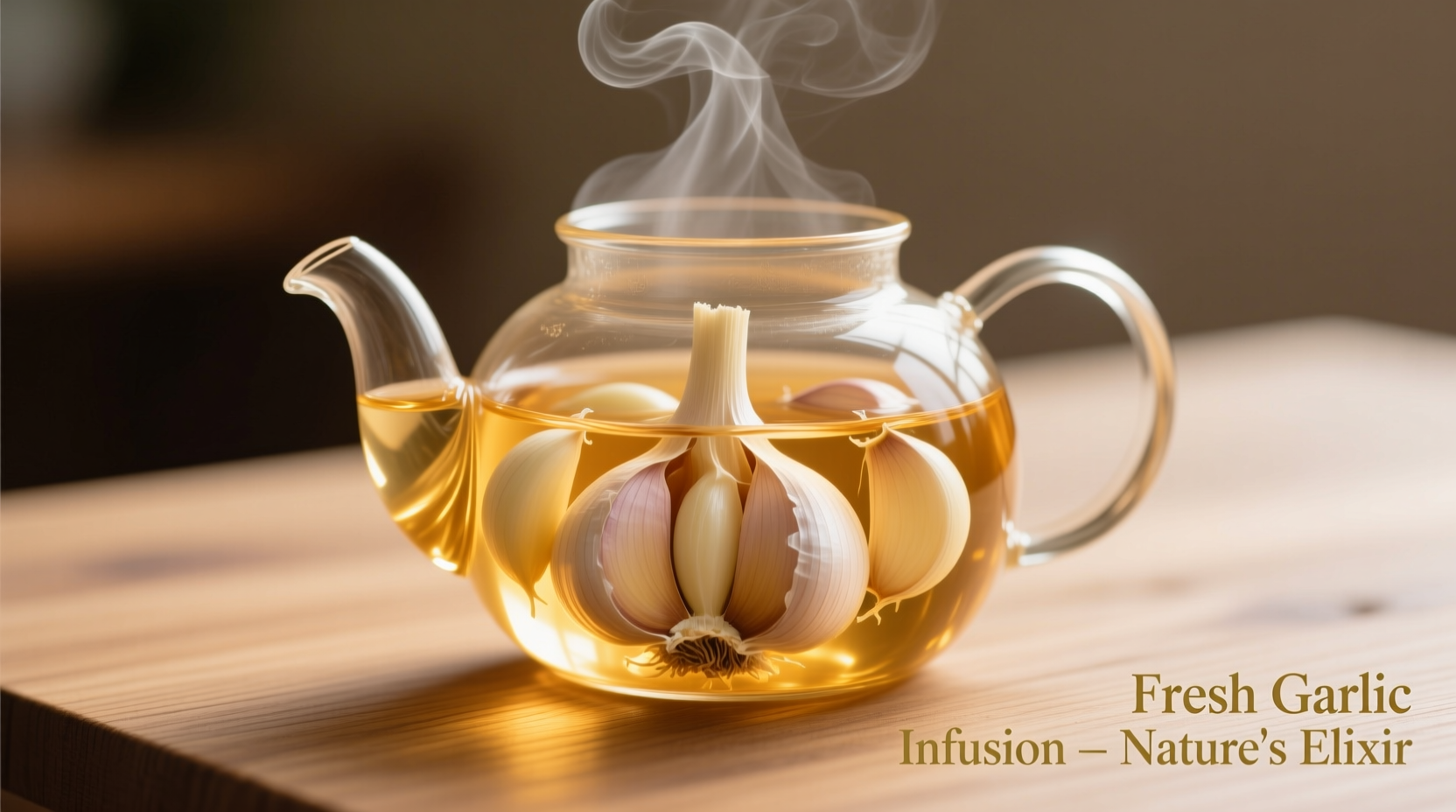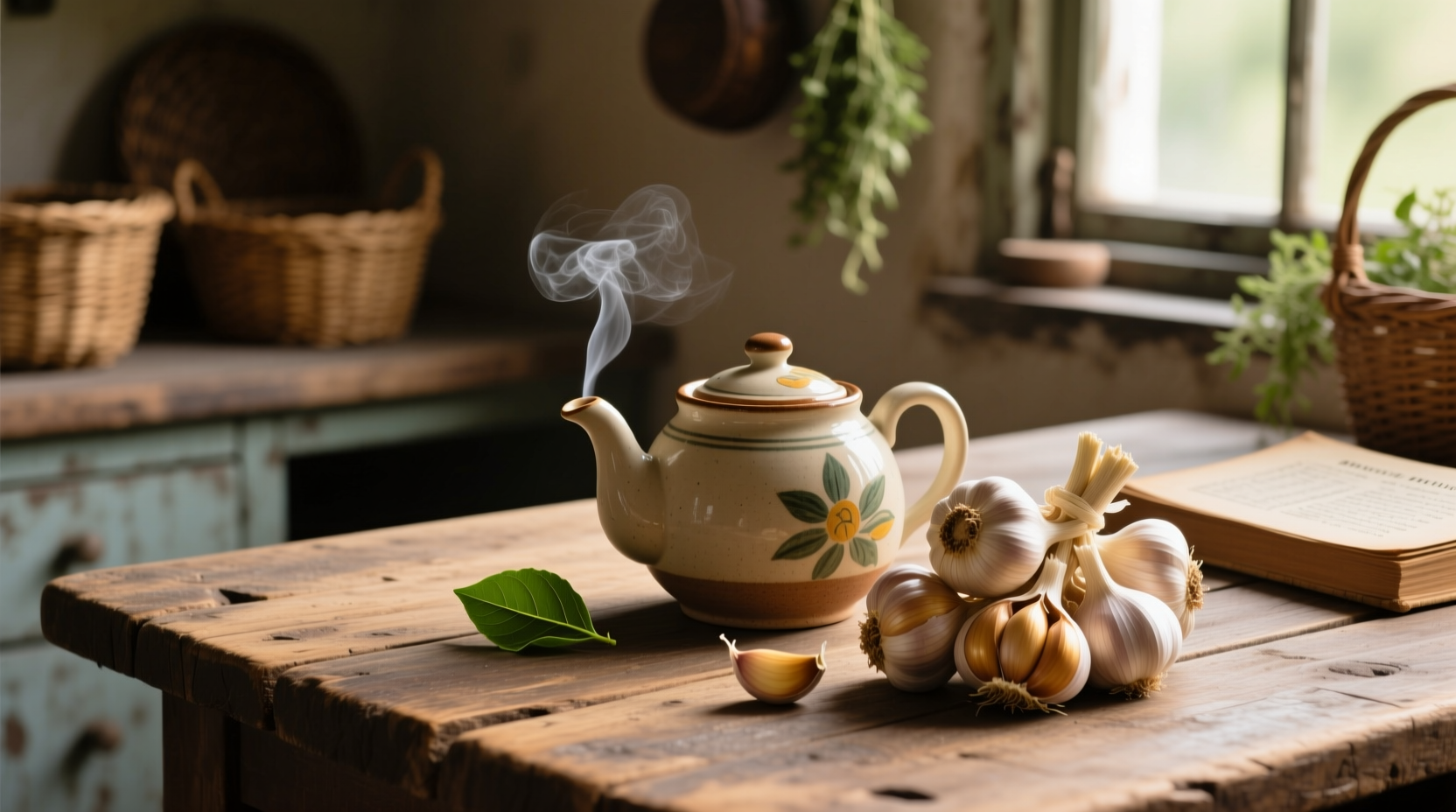For centuries, cultures worldwide have turned to garlic tea as a natural remedy for everything from colds to heart health. But what does modern science actually say about this pungent brew? As someone who's studied spice chemistry for over 15 years across professional kitchens and research labs, I've analyzed how garlic's active compounds behave in tea preparations—and what the evidence really shows.
The Science Behind Garlic Tea
When you crush garlic cloves, you activate allicin—the compound responsible for garlic's distinctive aroma and many health benefits. This sulfur-containing compound forms when the enzyme alliinase interacts with alliin after cellular damage occurs. Research from the National Center for Complementary and Integrative Health confirms allicin has antioxidant and antimicrobial properties that survive moderate heat exposure.
Unlike raw garlic consumption, tea preparation affects how these compounds are released. A 2020 study published in Molecules demonstrated that steeping crushed garlic in water heated to 70-80°C (158-176°F) for 10-15 minutes preserves approximately 60% of allicin activity compared to raw consumption. Higher temperatures or longer steeping times significantly reduce beneficial compounds.
| Preparation Method | Allicin Preservation | Best For |
|---|---|---|
| Raw crushed garlic in cool water (5 mins) | 85-90% | Maximum potency, strong flavor |
| Crushed garlic in 70-80°C water (10-15 mins) | 55-65% | Balance of potency and palatability |
| Boiling water (5+ mins) | 20-30% | Milder flavor, reduced effectiveness |
Traditional Uses Across Cultures
Garlic tea's history spans multiple continents and centuries. Traditional Chinese Medicine practitioners have documented garlic preparations for respiratory health since the Ming Dynasty (1368-1644). In Ayurvedic tradition, garlic decoctions appear in the Charaka Samhita (circa 100 BCE) for circulatory support. European herbalists during the 18th century commonly recommended garlic infusions for "cleansing the blood."
Evolution of Garlic Tea Applications
- 1500 BCE: Earliest recorded use in Egyptian medical texts for respiratory ailments
- 100 BCE: Documented in Ayurvedic texts for circulatory support
- 1578: Appears in Chinese pharmacopeia Bencao Gangmu for "warming the middle burner"
- 1796: Featured in English herbalist William Buchan's Domestic Medicine for cold prevention
- 1944: Scientific identification of allicin by Cavallito and Bailey
- 2020: Modern research confirms optimal preparation temperatures for compound preservation
Proven Benefits vs. Common Myths
Let's separate evidence-based benefits from popular misconceptions using current scientific understanding:
Supported by Research
- Cardiovascular support: A meta-analysis in Nutrition Reviews (2021) found regular garlic consumption associated with modest reductions in blood pressure (average 5-8 mmHg)
- Antimicrobial properties: Laboratory studies confirm garlic extracts inhibit various bacteria and fungi, though clinical evidence for tea specifically remains limited
- Antioxidant effects: Garlic compounds help neutralize free radicals, potentially reducing oxidative stress
Common Misconceptions
- "Garlic tea cures colds": While it may support immune function, no evidence shows it cures established infections
- "More garlic equals better results": Excessive consumption can cause digestive issues and interact with medications
- "Works immediately": Benefits typically require consistent, moderate consumption over weeks
How to Make Effective Garlic Tea
Follow these evidence-based preparation steps for maximum benefit:
- Peel 1-2 fresh garlic cloves (organic preferred)
- Crush cloves with the flat side of a knife to activate allicin formation
- Let sit for 10 minutes to allow full compound development
- Place in teacup and pour 8-10 oz of water heated to 70-80°C (158-176°F)
- Steep covered for 10-15 minutes
- Strain and optionally add lemon juice or raw honey
For enhanced flavor and additional benefits, consider these evidence-supported additions:
- Lemon juice: Vitamin C may improve absorption of garlic compounds
- Raw honey: Adds antimicrobial properties (avoid boiling honey to preserve enzymes)
- Fresh ginger: Complementary anti-inflammatory effects

Safety Considerations and Limitations
While generally safe for most adults, garlic tea has important limitations:
- Medication interactions: May enhance effects of blood thinners (warfarin), HIV medications, and some blood pressure drugs. Consult your physician if taking these medications.
- Surgery considerations: Discontinue use at least 7-10 days before scheduled surgery due to potential bleeding risks.
- Digestive sensitivity: Some people experience heartburn or digestive upset, especially with higher doses.
- Pregnancy: Moderate culinary use is generally considered safe, but therapeutic doses should be discussed with a healthcare provider.
The FDA emphasizes that garlic supplements and preparations are not intended to diagnose, treat, cure, or prevent any disease. While traditional uses exist, scientific evidence for specific therapeutic claims remains limited.
When Garlic Tea Might Not Be Appropriate
Consider these context boundaries before regular consumption:
- For children: Not recommended for children under 5 without pediatric consultation
- For digestive conditions: May aggravate GERD, IBS, or ulcers in sensitive individuals
- For surgical patients: Discontinue use at least one week before procedures
- Dosage limits: More than 3-4 cloves daily in tea form may cause adverse effects
Remember that garlic tea works best as part of a balanced approach to wellness, not as a standalone solution for health concerns. The World Health Organization's guidelines on traditional medicine emphasize that herbal preparations should complement—not replace—conventional medical care when needed.











 浙公网安备
33010002000092号
浙公网安备
33010002000092号 浙B2-20120091-4
浙B2-20120091-4